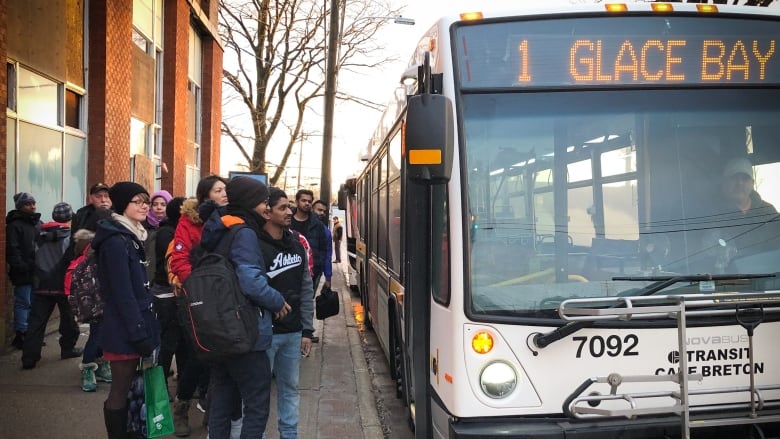Rise again: Cape Breton population grows after more than 20 years of decline
International students at CBU boost population, improve unemployment rate, according to StatsCan

Cape Breton Island's population grew in 2019 after more than 20 years of declines and the unemployment rate dropped, largely due to the international student population at Cape Breton University.
Thomas Storring, director of economics and statistics for Nova Scotia's Finance Department, said the latest Statistics Canada numbers show the university students had a significant impact, mostly in Cape Breton Regional Municipality.
"There was an increase of 2,249 in net non-permanent residents in CBRM and, just to put that in context, the increase in Halifax was 1,481, so it's a very large jump," Storring said.
Non-permanent residents generally include temporary foreign workers and international students. Last year, CBU's international student population grew by about 3,500.
"That's how much this means to the overall population in Cape Breton, that that's actually pushing the population up," Storring said.
The island's total population rose by 1,491 people last year to 134,850 driven mostly by growth in CBRM, Storring said.

"In the other three counties, there had been population declines ongoing for many years, but particularly in Richmond and Victoria Counties, the pace of population decline has really slowed," he said.
"It's not rising, but it's not declining as fast either, and a similar pattern is observed in Inverness, though there's a little bit of decline in population there, as well."
At the same time, the unemployment rate fell from 15.1 per cent to 13.3 per cent, its lowest level since 2008.
"In this case, in 2019, the improvement in the unemployment rate happened because Cape Breton's employment grew faster than its labour force," Storring said.

Last year was the first time since 2008 that the number of jobs and the available workforce grew in the same year, he said.
Employment increased by 5.6 per cent and the labour force grew by 3.4 per cent in 2019.
Storring said those numbers were also driven by the economic impact of thousands of international students.
"Just the fact that they are in the community and they require services and housing, as well, so they can have employment impacts beyond their own employment," he said.
Strain on services
The rapid population growth has not been without its challenges. Cape Breton Transit has had to add buses, drivers and routes to accommodate new riders.
Meanwhile, the Cape Breton Partnership reported this week that the number of immigrants permanently calling the island home also grew last year.
According to the organization, 385 new permanent residents moved to Cape Breton, with 315 of those in CBRM.
That is nearly double the number of immigrants who moved to the island in 2017.
Whether last year was a blip or the start of a trend depends on immigration and international students, Storring said.

Becky Chisholm, director of communications for Cape Breton University, said total enrolment is about 5,500 and that's expected to remain stable for now.
"I think right now we're focusing on investments to stay competitive in the market, both internationally and domestically, so I think that's the priority, and then to maintain a target of between 5,000 and 5,500," she said.
A recent study showed international students each add about $36,000 to a local economy. So, for Cape Breton, that impact has been about $128 million, Chisholm said.
"I think CBU has always had a role within the community," she said.
"We're deeply connected to Cape Breton Island so that ripple effect is definitely a positive."
MORE TOP STORIES

